Concrete kitchen floor ideas – 17 ways to introduce this popular style
From the real deal to easier alternative options, see how this industrial look can enhance your space
When weighing up kitchen flooring ideas there are a number of things to consider. As well as looks, there's the cost, installation and maintenance. Concrete differs in its installation from other types of flooring. If you love concrete kitchen floor ideas but have wondered whether it is right for your space, you'll be pleasantly surprised.
'Concrete is poured and pumped in on site,' says Ben Young, Sales Manager, Lazenby concrete floor specialists. 'This needs to be done before the kitchen is installed and walls are plastered.'
That's all good if you're starting with a blank, empty space, but isn't possible for those who are just updating existing cabinetry with new fronts and worktops. Or kitchens that aren't on ground level. However, the good news is there are numerous options and many ways to still achieve this popular look.
Concrete kitchen floor ideas
Poured concrete takes around three days to install and is left protected while it 'cures'. 'Any building work, such as the kitchen fitting can be carried out during this time,' says Ben Young at Lazenby. 'Once the building works are completed we would return to carry out the final clean, polish and seal, which takes one day.'
However, when this is not possible, concrete tiles, concrete-effect porcelain tiles or luxury vinyl flooring can offer a similar style. 'Porcelain concrete-effect floor tiles are far more practical and easier to install than poured cement and come in a variety of sizes, styles, and colours,' says Jo Oliver, Director, The Stone & Ceramic Warehouse. 'Porcelain tiles are easy to maintain and won’t stain, scratch, wear or crack, as can be the case with real concrete floors.'
1. Combine with rich tones
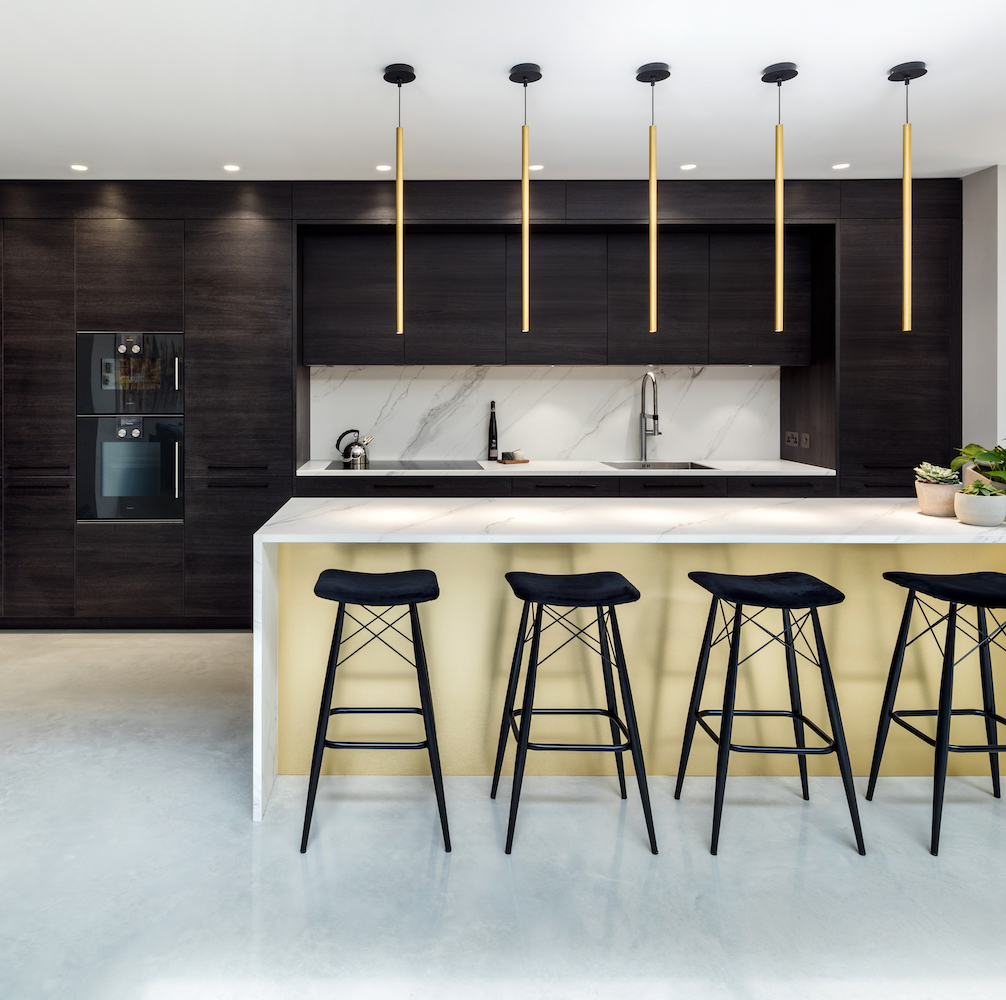
If you choose a poured concrete floor in your kitchen, consider combining it with rich materials on the cabinetry, lighting and elsewhere. The stark contrast between concrete's cool urban style and the warmth of dark timber or golden hued metals creates a dramatic effect.
Be sure to take your swatches with you when you select your floor as there are a number of shades and finishes available. And expect to pay from around £110 per sq m. 'We have a broad range of 15 standard colours which feature everything from black to white. We can also create bespoke colours if required,' says Ben Young from Lazenby.
Get the Ideal Home Newsletter
Sign up to our newsletter for style and decor inspiration, house makeovers, project advice and more.
2. Team tiles with turquoise
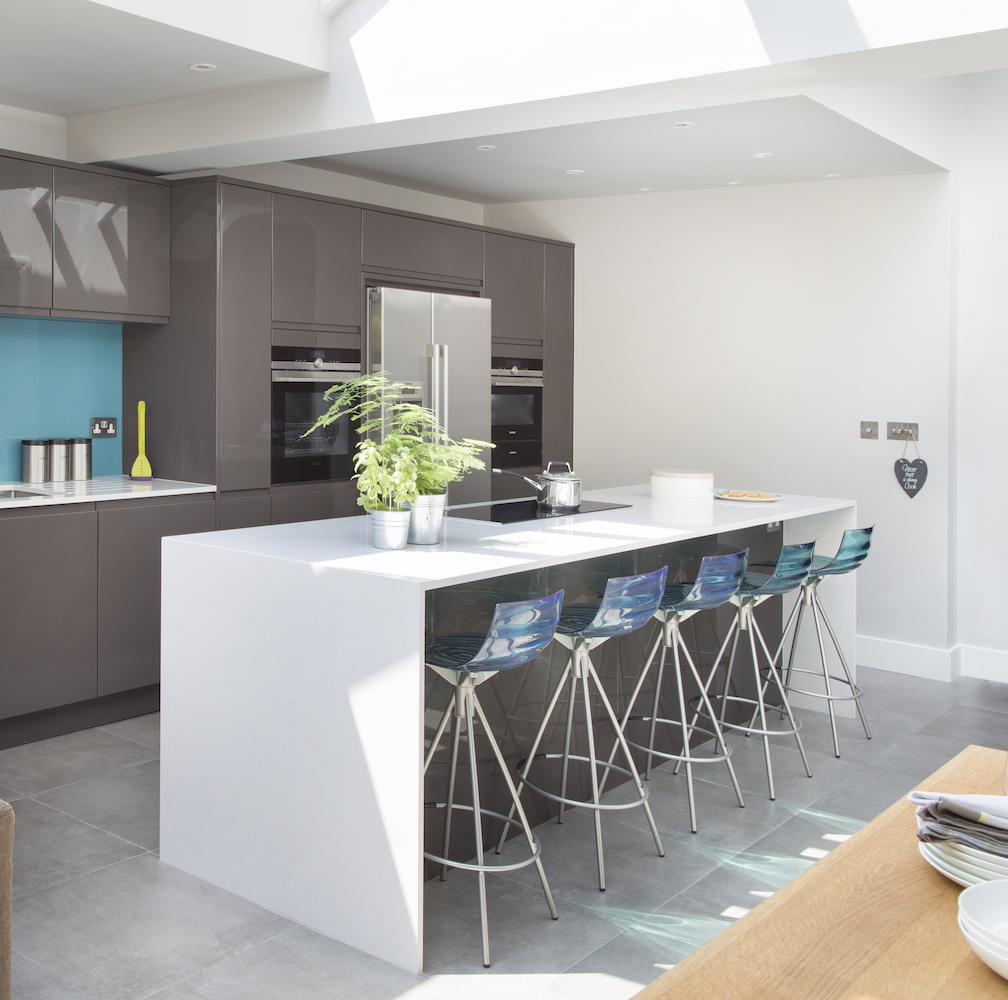
If poured concrete is too much effort and expense for you, or not possible due to the logistics or location of your property, concrete kitchen floor tiles may be a simpler option. These can be laid like other tiles after your kitchen has been installed.
Mixing cool grey slabs with warmer neutrals on door fronts works well. To lift a scheme and prevent it looking drab, add a zingy accent shade, such as turquoise. A small area such as a kitchen splashback is ideal as a bold colour won't overpower here. You can then repeat the tone elsewhere through furniture or accessories.
3. Extend to the dining area
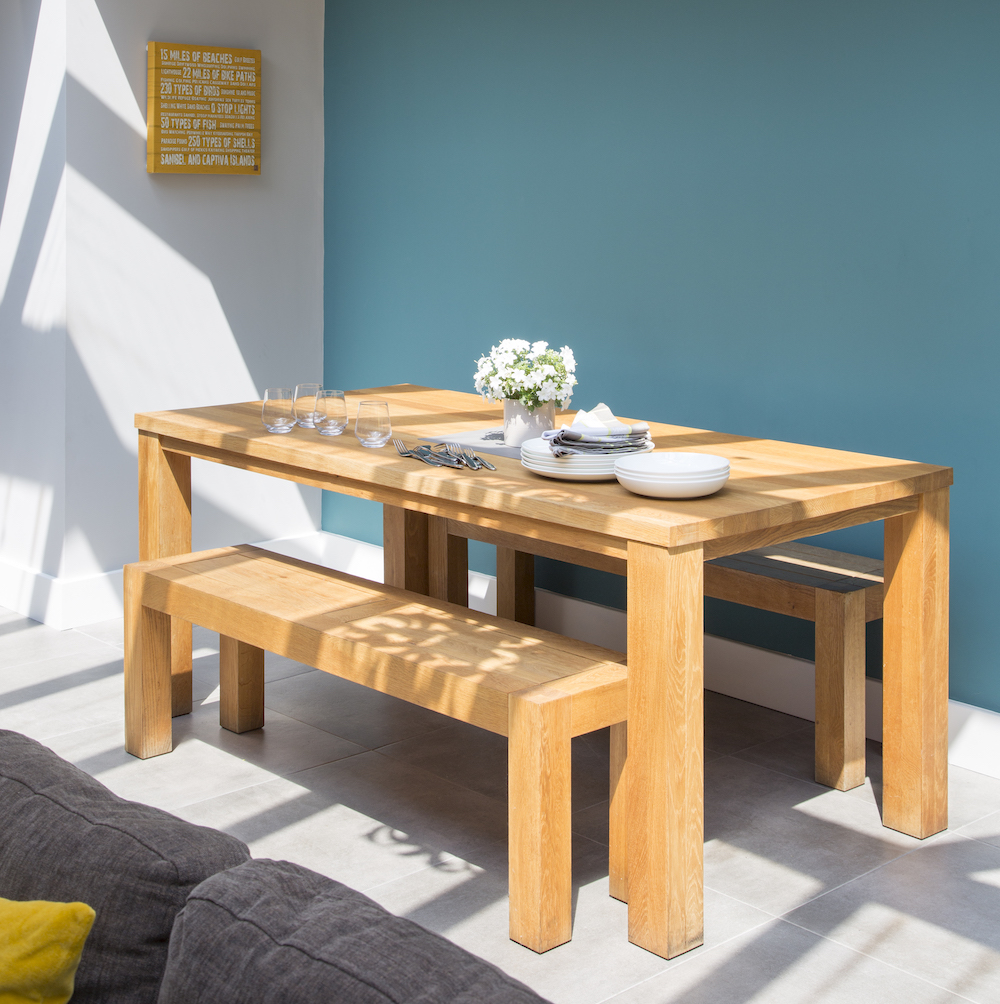
To create a seamless open plan kitchen, it's better to lay the same flooring throughout. It not only makes a space flow, it feels bigger too, as our eyes don't carve the floor into smaller areas. So make sure what you pick for your kitchen floor will work in your dining or living area too.
In order to connect areas with different functions, such as a kitchen and dining or seating area, repeat colours and materials too. That way it will look more cohesive and feel more comfortable.
4. Choose pale shades
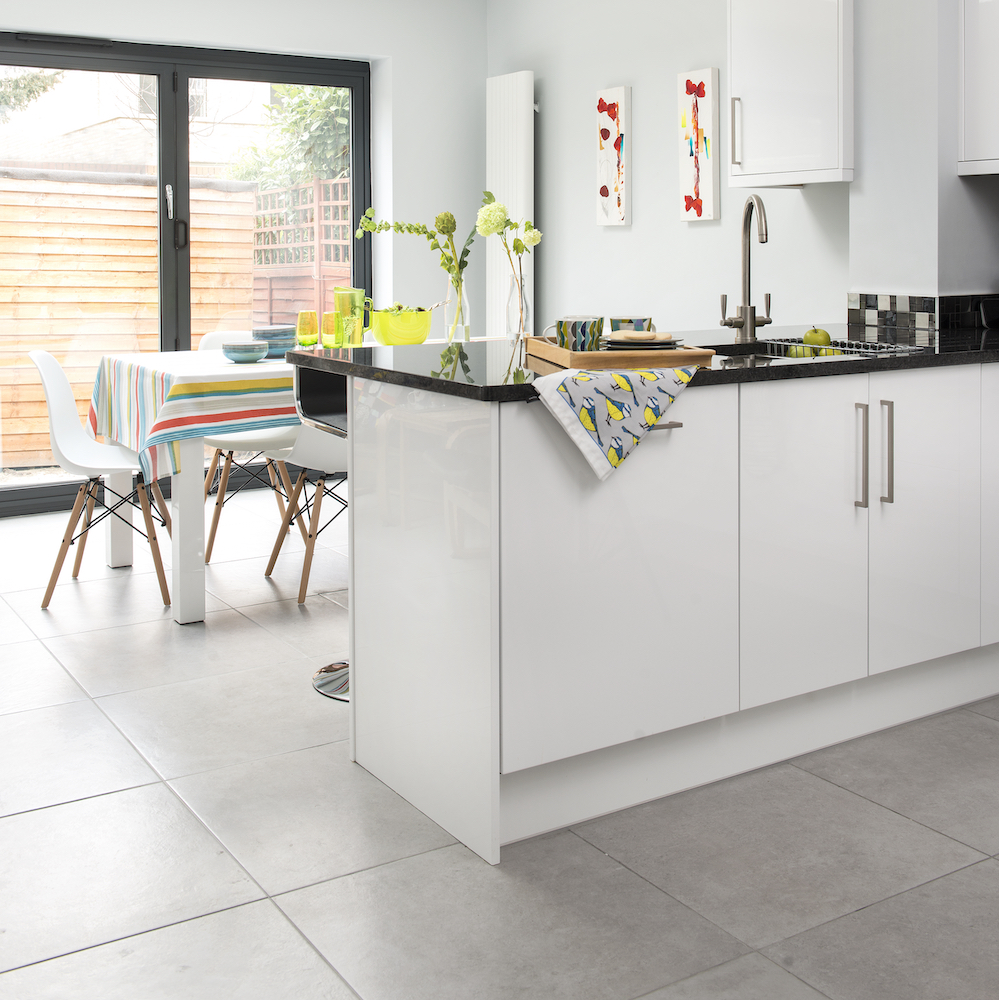
One of the reasons, concrete-effect porcelain tiles are a good option is their hard-wearing properties. This means it's possible to choose the palest of shades without having to worry about them getting stained or damaged.
'The most popular places to use porcelain floor tiles is often in high traffic areas such as kitchens and bathrooms,' says Jo Oliver, Director, The Stone & Ceramic Warehouse. 'We offer many different shades of concrete-effect tiles, from pale neutral tones to deeper greys and almost black too. Some ranges have a soft subtle concrete look, whereas others emulate an unfinished poured concrete effect for a more industrial style feel.'
5. Consider a polished finish
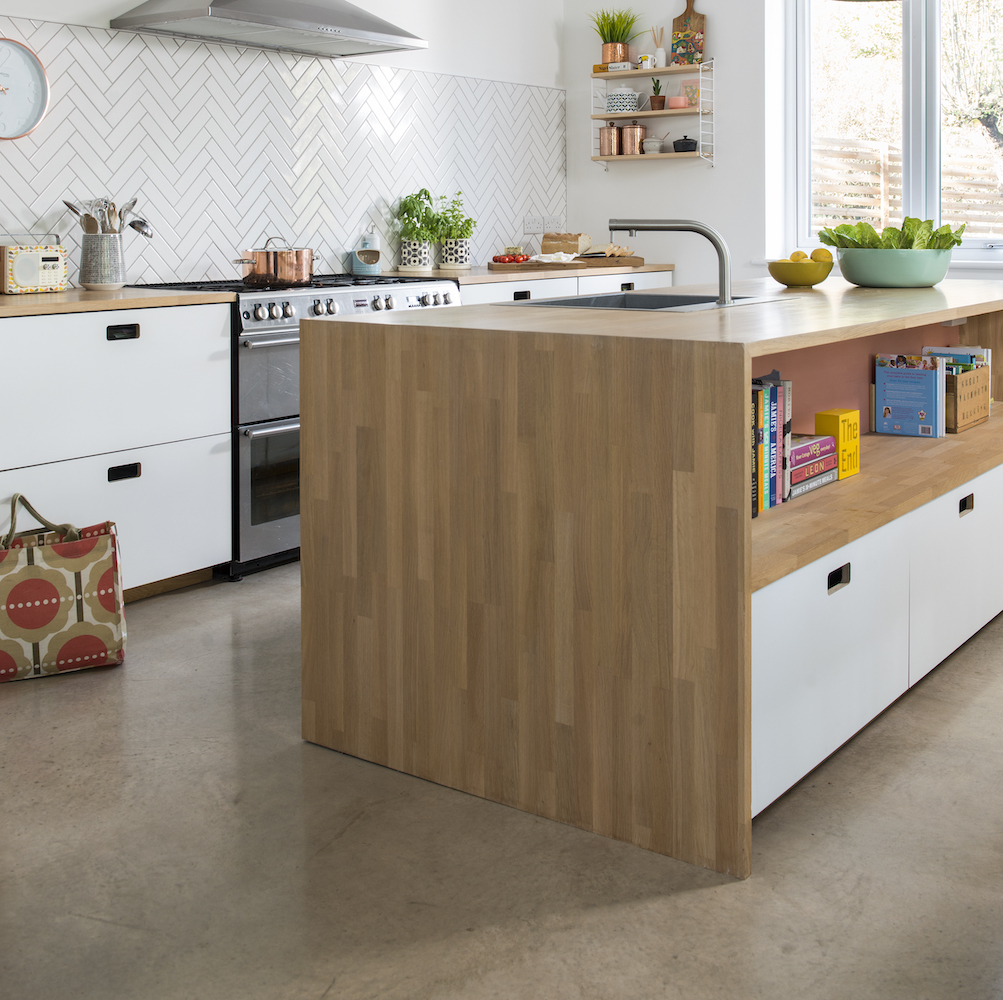
If you've decided on a real concrete floor, consider the colour – and the finish. A warm beige hue with a satin or polished finish will look great paired with oiled timber and matt white materials on the cabinetry. The flecks in the flooring add character and movement, while its soft sheen subtly reflects light.
'Whichever of the finishes you choose, the maintenance required is consistent,' says Ben Young.
6. Add warmth to crisp white
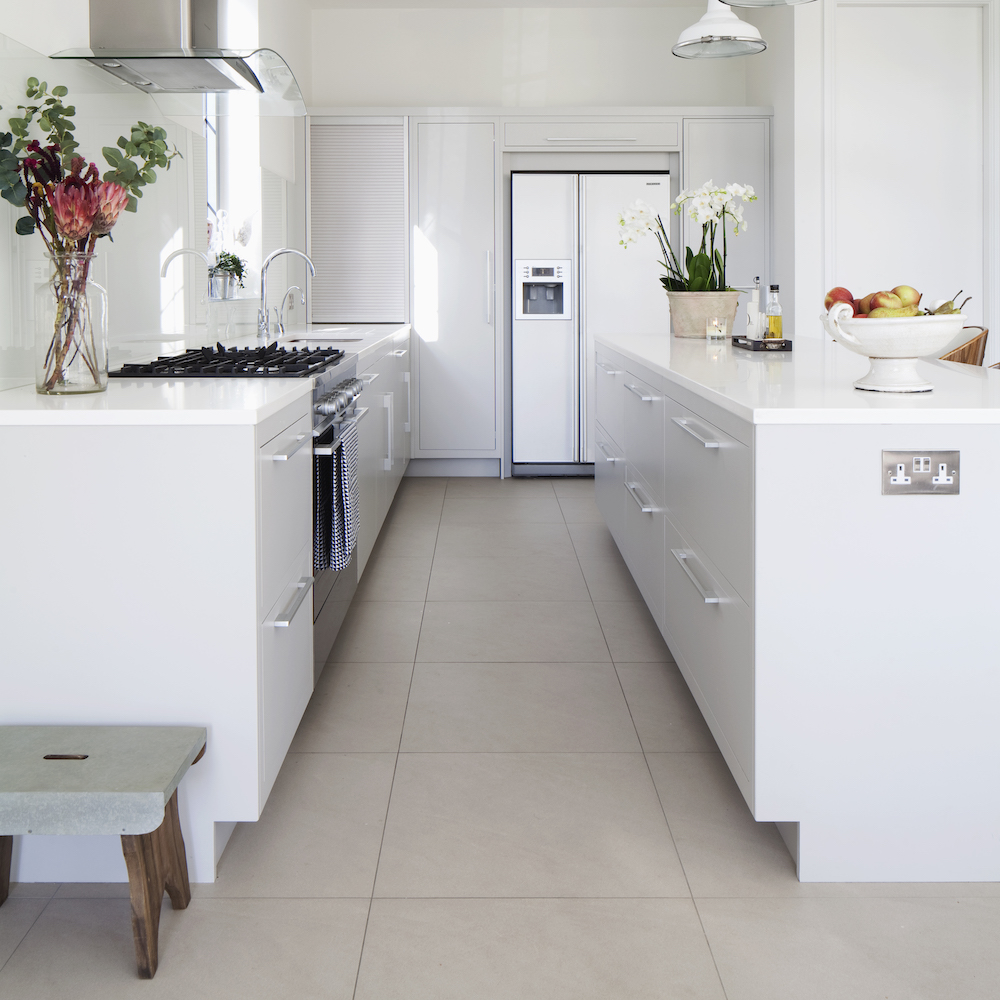
White cabinets and worktops are still a popular choice for kitchens as this combo looks clean and fresh. But white can look a little cold and sterile, if you're not careful. A great way to avoid this is with your flooring choice.
If you're keen to recreate the look of concrete kitchen floor ideas, opt for concrete-effect tiles. This is a great option for modern kitchen flooring. Go for warm beige tones rather than cool grey. Choosing this for the floor, will ground your scheme with warmth and make it feel welcoming, rather than austere.
7. Mix with metallics
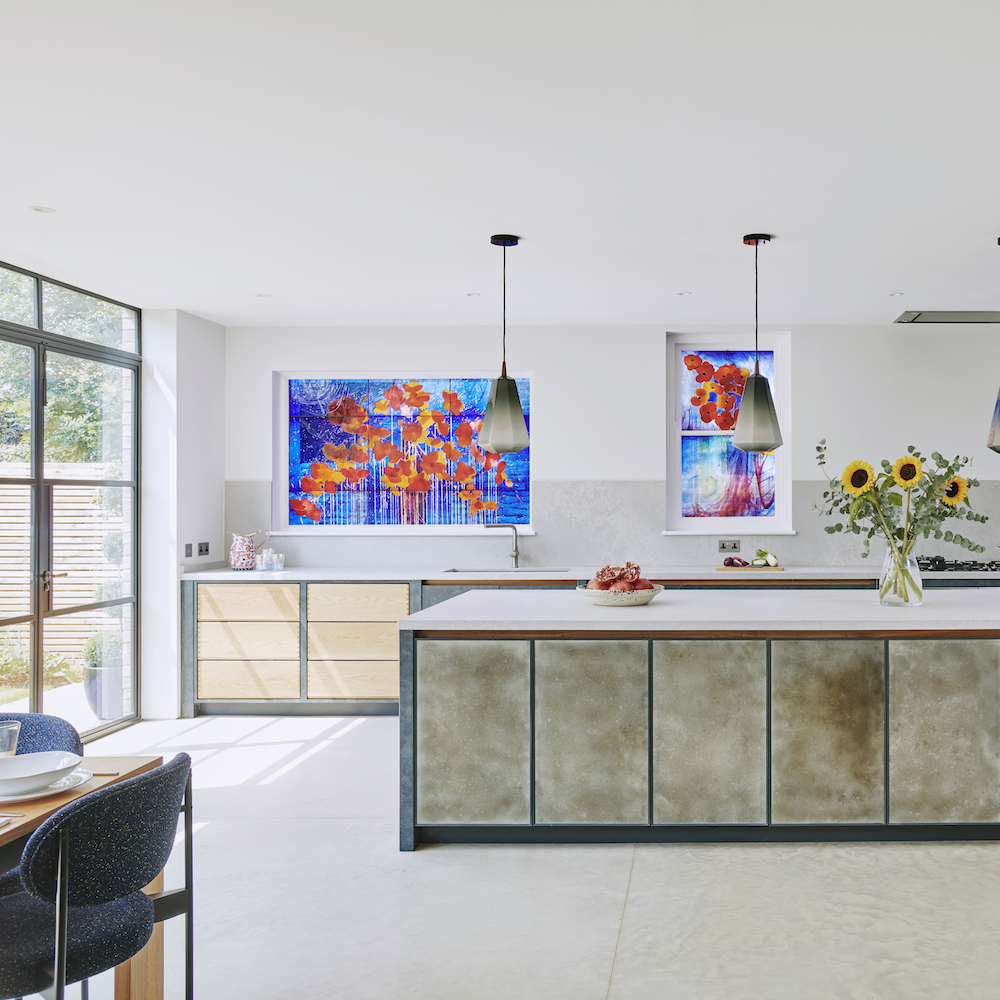
Concrete is a versatile option that works with many colours and materials, so it's a great foundation for a kitchen scheme. Here it looks beautiful mixed with aged, hand-finished solid zinc doors on the cabinetry and concrete-look Caesarstone worktops.
'The beauty of concrete is that it’s a blank canvas that can be coloured to match any scheme,' says Charlie Smallbone, founder of Ledbury Studio. 'Because it's a hardwearing and low-maintenance material, concrete is unbeatable in high-traffic areas like a family kitchen.
'Having said that, it is a contemporary finish better suited to a modern kitchen scheme rather than a traditional one. For such a finish, concrete works really well with natural materials such as wood, as well as rich, burnished metallics.'
8. Contrast with bold red cabinets
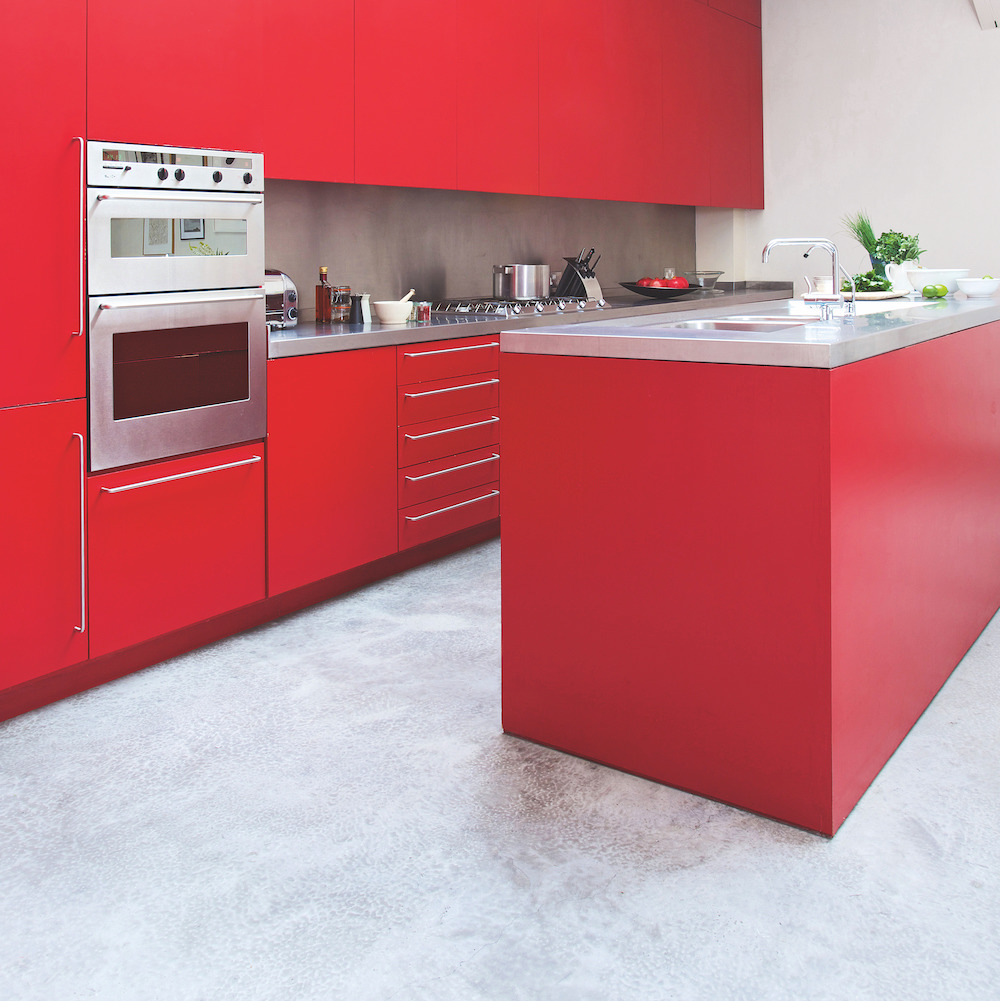
Create a contemporary fire and ice combo with a bright red finish on your kitchen units and an ice grey concrete floor. Stainless steel worktops and splashbacks will also provide a cool counterbalance to the bold colour.
You will need to consider how you will heat your contemporary kitchen. This should be decided at the early design stage when calculating how much a new kitchen costs. For a consistently clean and unfussy look, underfloor heating is a good option.
'Concrete works really well with underfloor heating systems, as it warms up quickly and then retains that heat,' says Charlie Smallbone, founder of Ledbury Studio. 'Be sure to budget for underfloor heating alongside your concrete flooring.'
9. Ground with slate grey
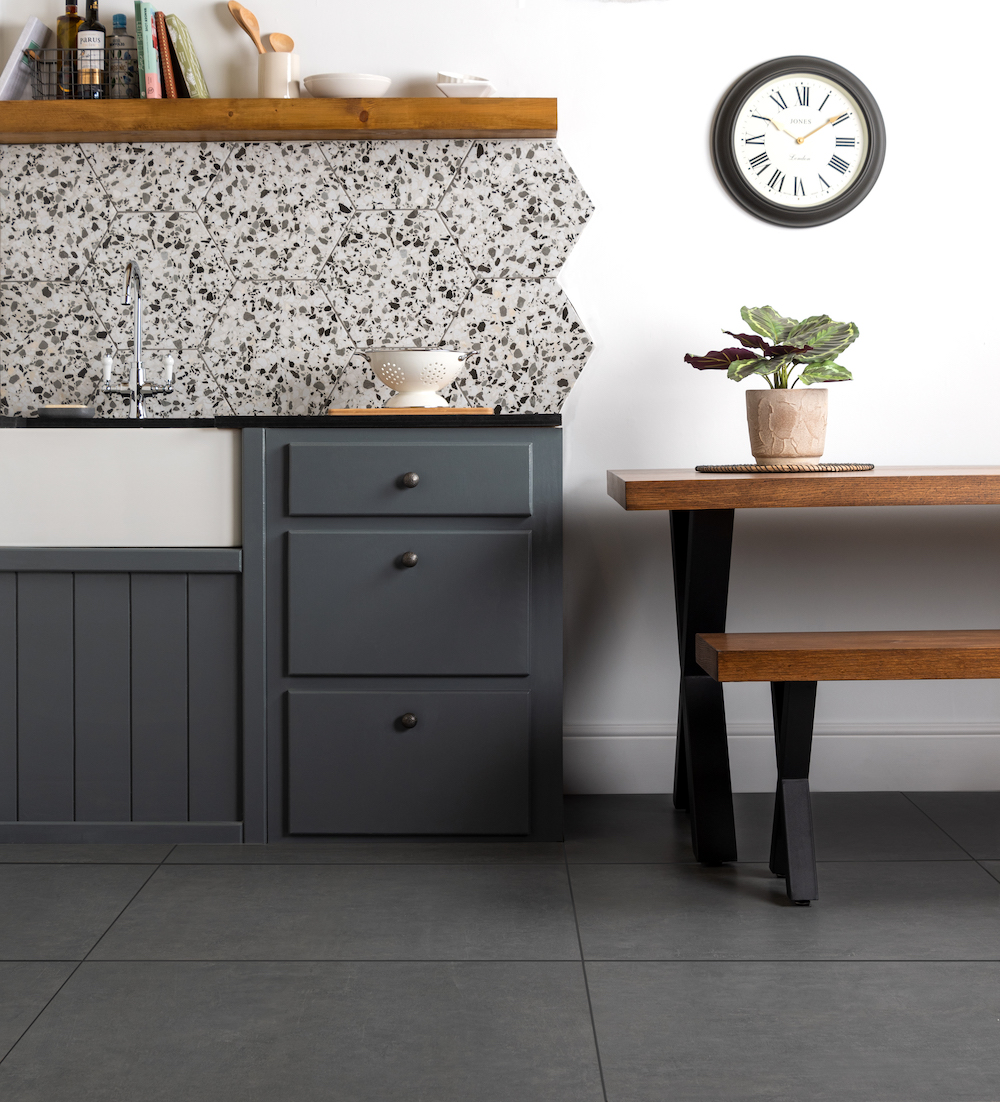
Another benefit with concrete-effect porcelain floor tiles, besides the easier installation, is the cost. At around £20-30 per square metre, depending where you buy them from, porcelain tiles are considerably cheaper than poured concrete.
This cost saving means you could stretch your budget much further on other items if you need or prefer to.
10. Team with terrazzo
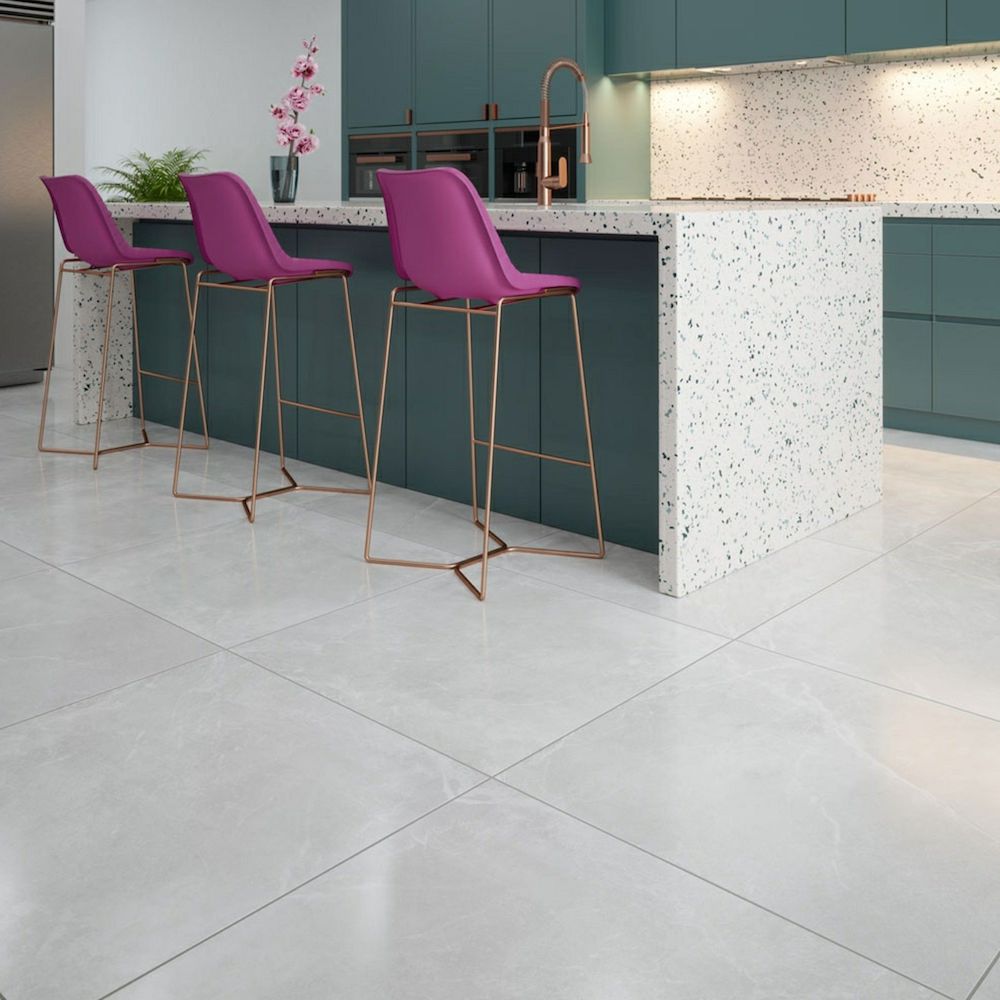
A neutral base, such as concrete-effect floor tiles, will allow other materials and colours to shine. Terrazzo (or one of its lookalikes) is a fantastic material to team with it, especially for worktops and splashbacks.
Firstly, you can opt for a similar base tone to your flooring, and secondly, you can select a terrazzo with chips that coordinate with your choice of cabinetry colour. This will really pull the room together, especially if you pull out any accent tones from the terrazzo and repeat them in your furniture or accessories.
11. Continue your floor outside
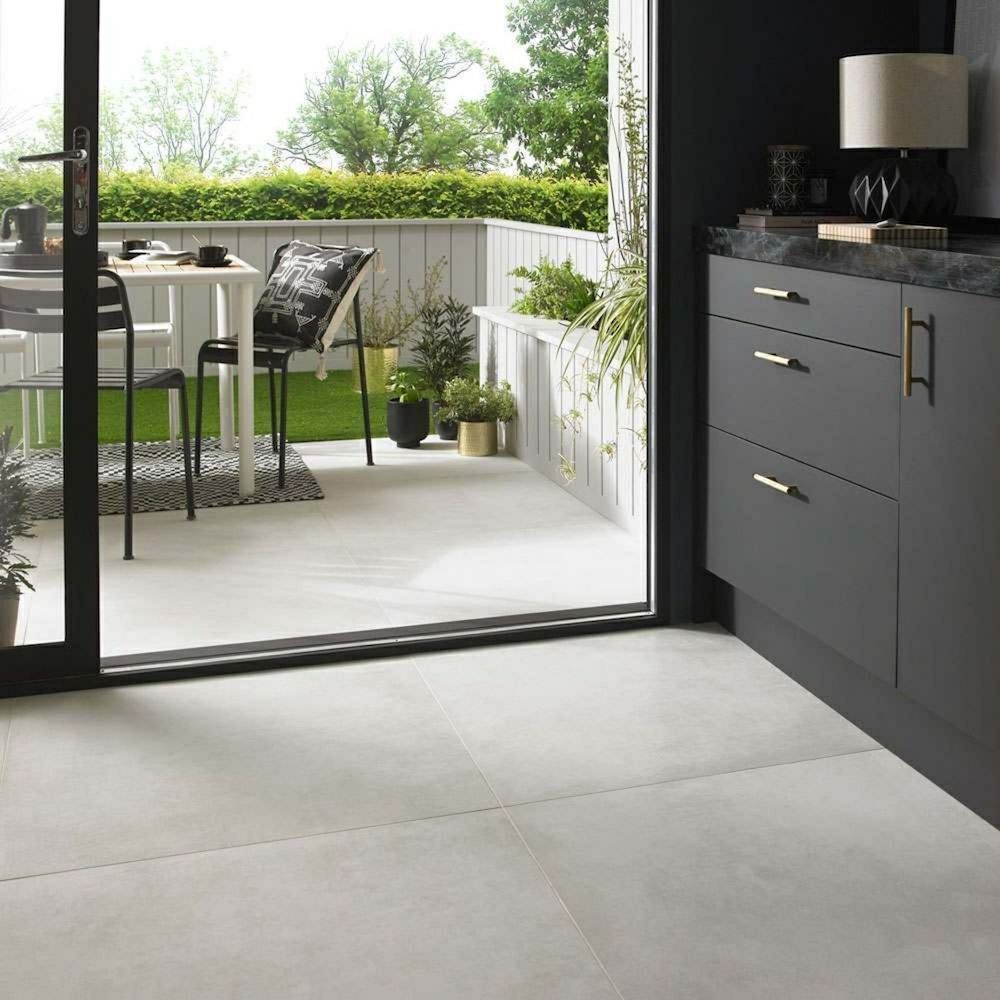
Creating a seamless indoor-outdoor connection is something many strive for. If you have large glass doors, a good way to achieve this is by repeating some of the materials used in your interior on an outdoor living space, such as the flooring. By doing this your eyes see it as one continual space rather than separate areas.
'Many porcelain tiles are available in anti-slip finishes suitable for outdoor use,' says Jo Oliver, Director, The Stone & Ceramic Warehouse. 'This makes them the perfect solution for those wanting to create a continuous flow from inside the home out into the garden.'
Be mindful that your exterior also needs to blend with nature outside. We feel better when we look at greenery and it provides a home for the natural world too, so include plenty of living plants and shrubs too.
12. Go for gloss
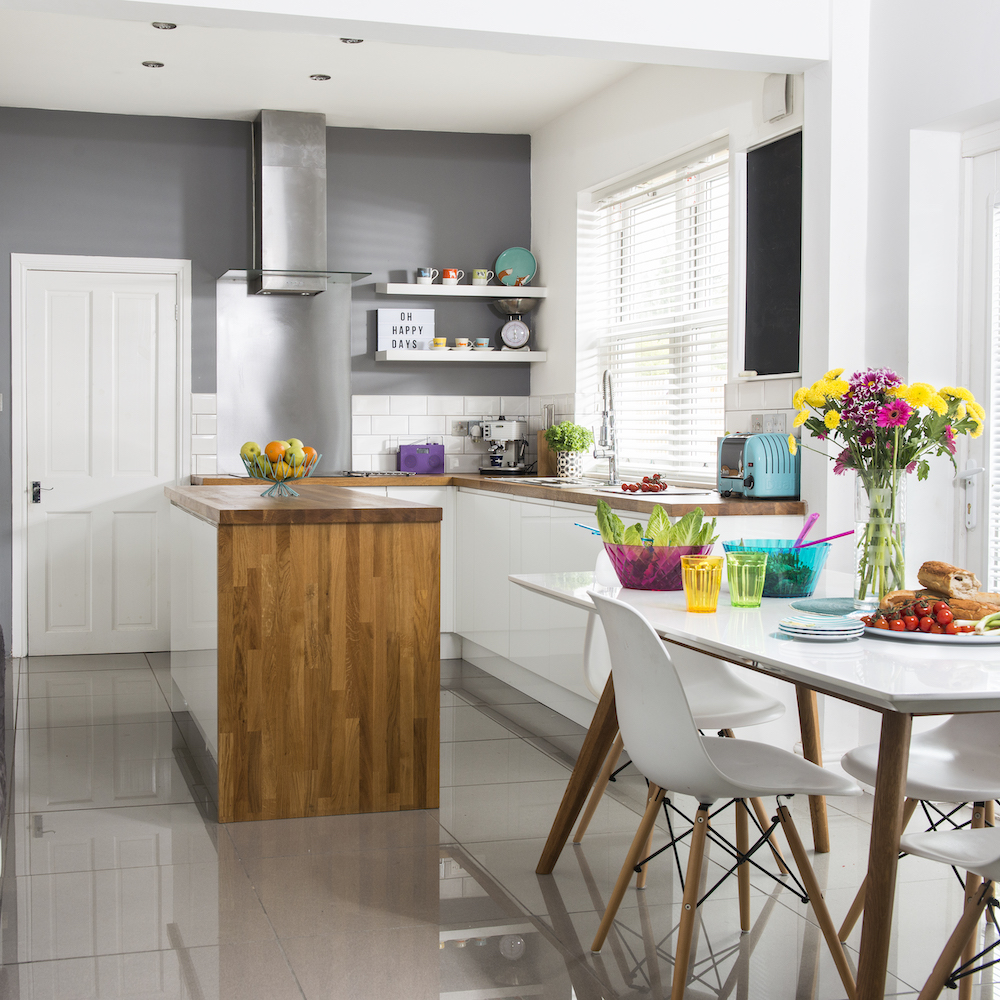
When we think of concrete or its lookalikes we tend to associate it with the matt surfaces we see outside on paving slabs. That gritty urban look is a popular finish. Yet it's possible to choose a highly polished gloss surface too.
This gives concrete's industrial style a far slicker edge. 'Also by choosing large scale or super-sized tiles means there are fewer grout lines to contend with, which creates a seamless, high-end finish,' says Jo Oliver, Director, The Stone & Ceramic Warehouse.
13. Insulate with LVT underfoot
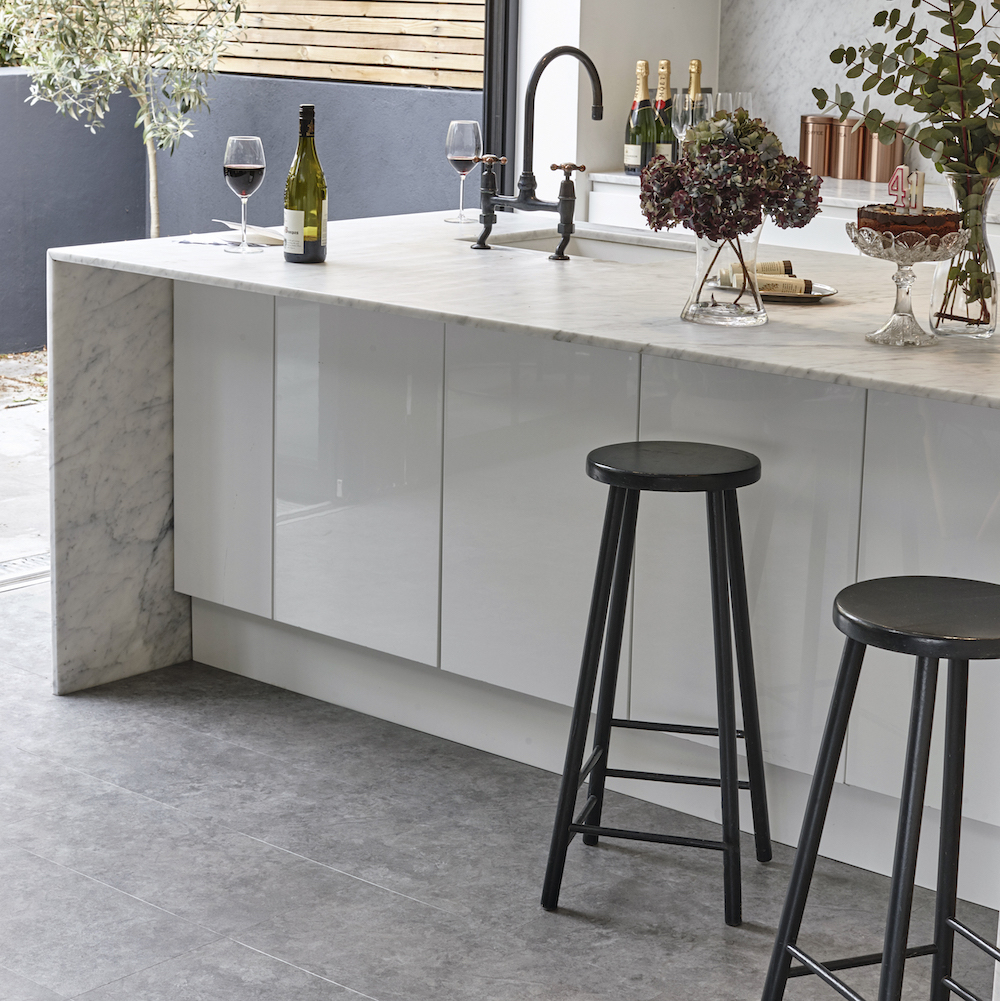
There are more alternatives to poured concrete than porcelain or concrete tiles. Luxury vinyl flooring is another way to achieve a similar look - and it comes with its own bonuses.
'LVT as a material is much warmer underfoot than traditional concrete,' says Inga Morris-Blincoe, General Manager at Lifestyle Floors. 'LVT also has a high TOG rating, meaning it provides insulation between the (cold) subfloor and your room, which could lead to a more comfortable room, as well as reduced heating costs.'
Be aware, as with tiles, a smooth and damp-free subfloor is required before LVT can be fitted.
14. Add interest with different sized tiles
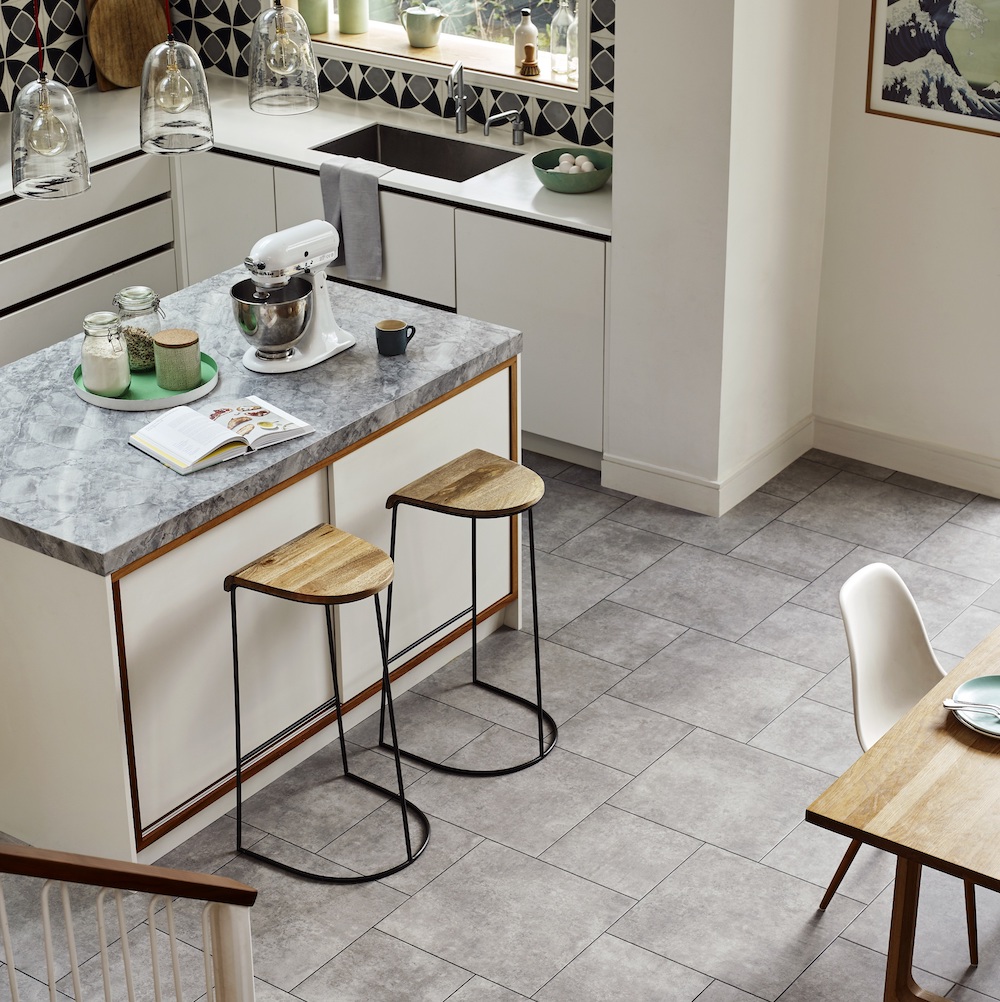
For a less uniform style, create an interesting laying pattern with different sized LVT tiles or planks. 'We're noticing more fluidity in stone and concrete LVT flooring designs,' says Lorna Williams, Head of Product Design, Amtico.
'Flooring patterns can completely change the look of a room. And people are looking to use concrete in a playful way, for example pairing different kinds or sizes.'
15. Enhance industrial style with bare brick
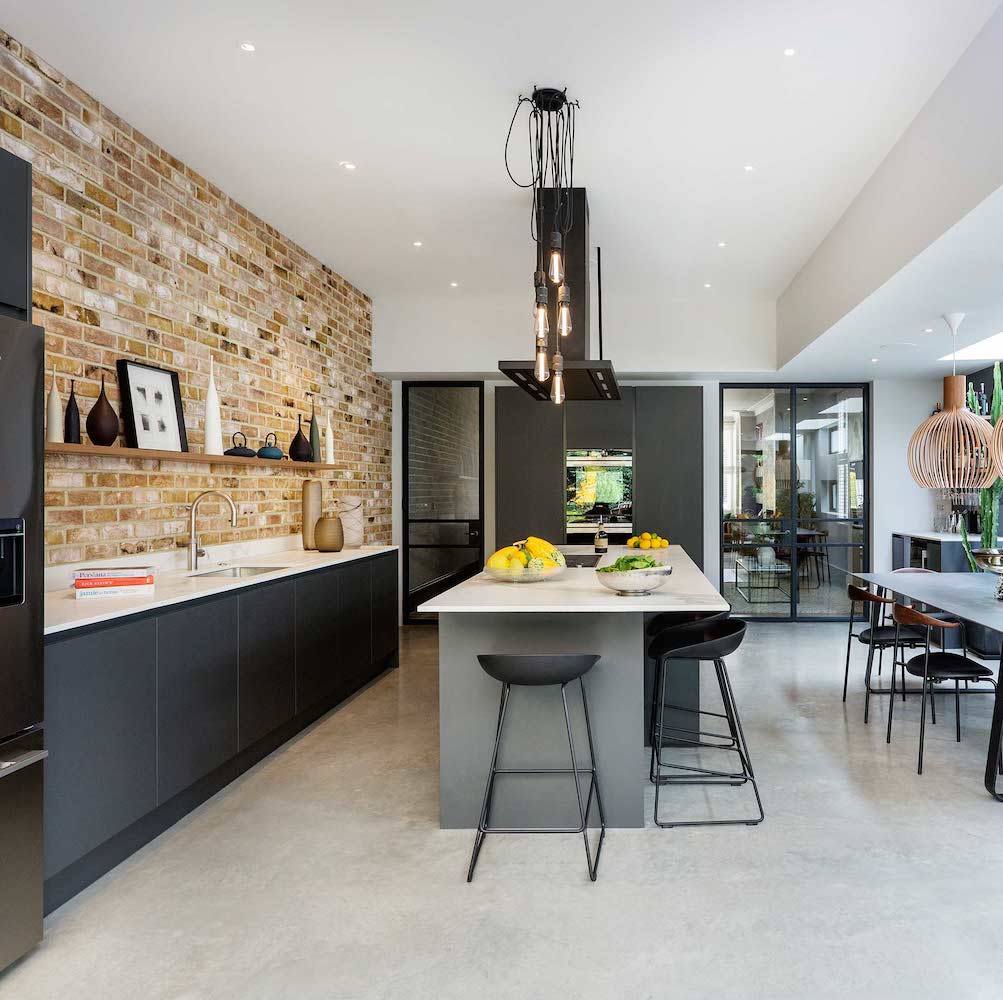
If you had the impression polished concrete flooring would look cold or bare think again. In this modern kitchen by interior design company, Zulufish, concrete has been teamed with a vast exposed brick wall and the result is spectacular.
The honey tones of the bricks add warmth to the monochrome scheme with its matt charcoal cabinets and white marble worktops. On the other side of the room, stylish timber pendants over the dining table echo the warm tones of the wall.
16. Coordinate with your walls
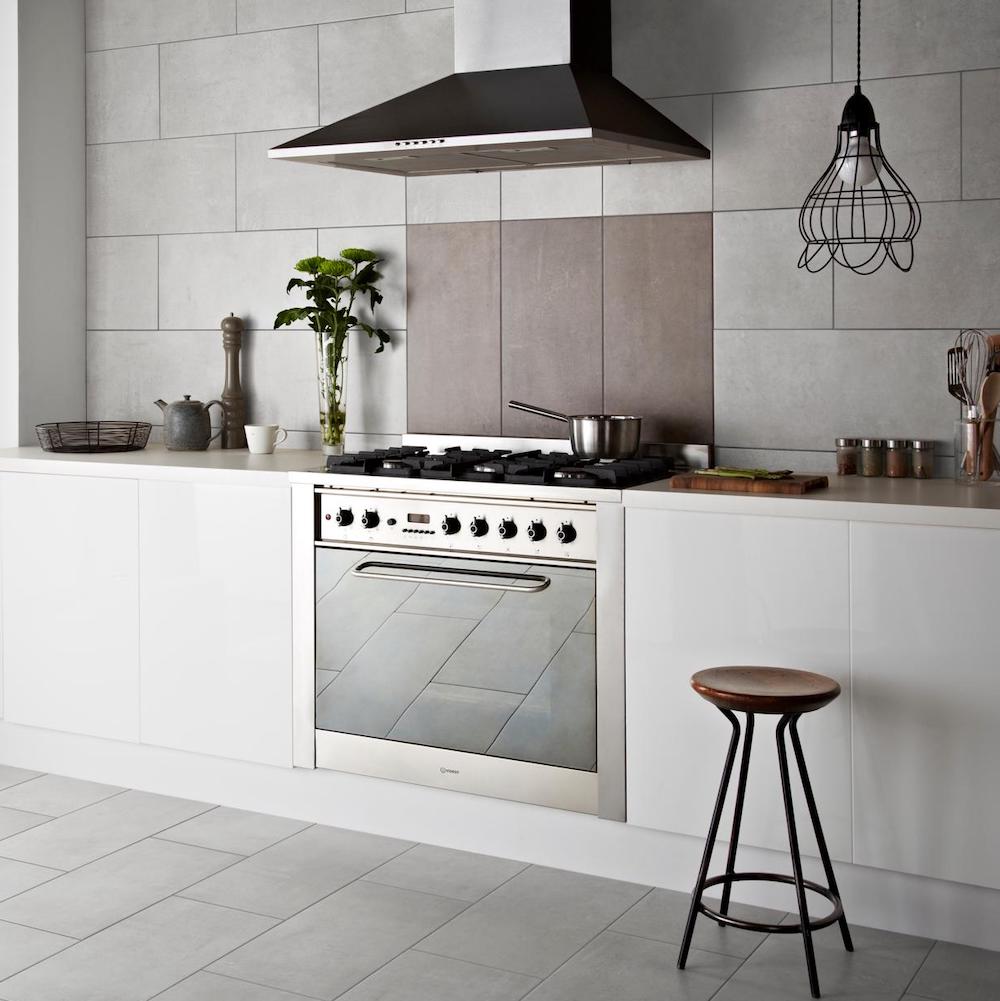
In the kitchen there is a tendency to use smaller and different tiles on the walls. Yet replicating the same sized concrete-style tiles on both the floors and walls looks highly effective, especially in a small kitchen. Especially, when laid in an opposing brick pattern shown here.
Not only does this laying pattern enhance the width of the room in different directions, it offers a fresh modern style.
17. Select super-sized sustainable tiles
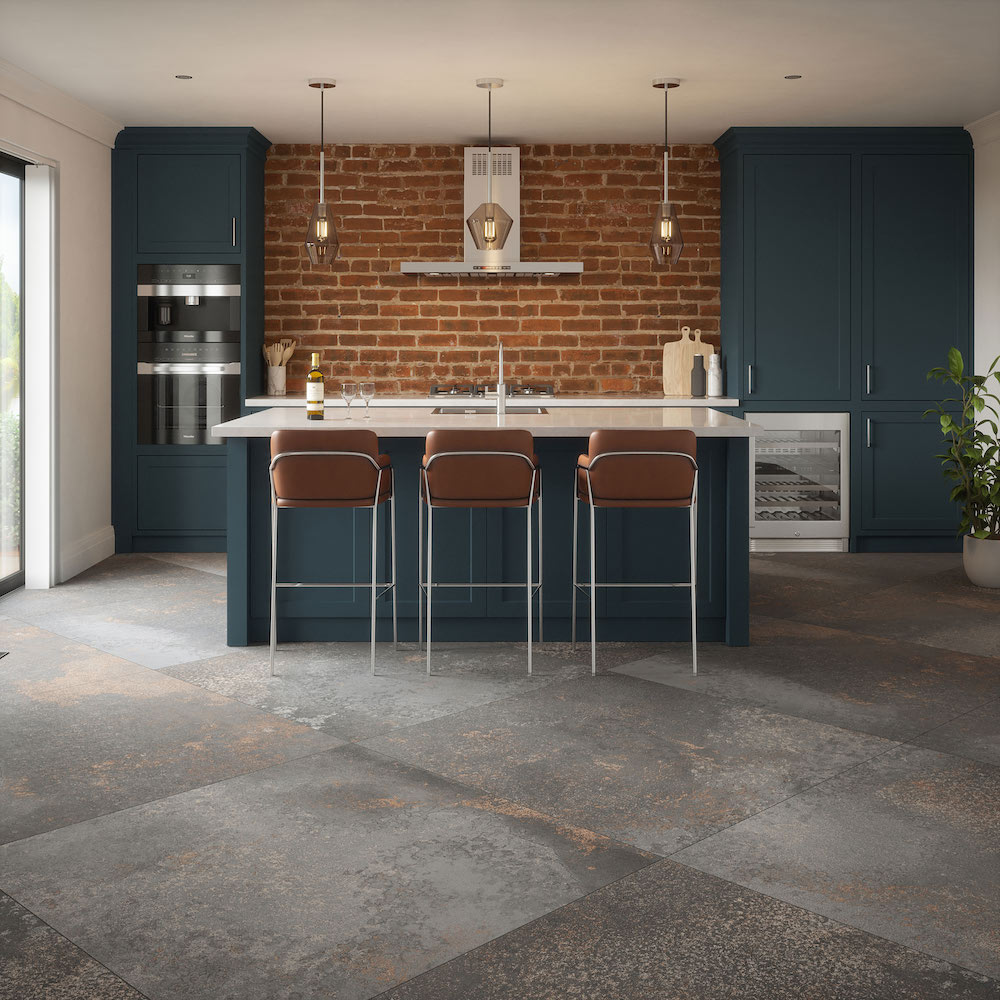
These super-sized tiles have a raw, industrial feel that emulates the look of concrete and salvaged metals, with details in their appearance that resemble abrasions and oxidisation. The various shades of carbon grey combine with metallic rust-browns to create a mottled look with plenty of character.
Ideal for modern rustic or industrial-style schemes, the tiles are made with 90% recycled materials too. With the real need to shop sustainably, these tiles offer a unique look and a more eco-friendly choice.
How do you lay a concrete floor?
The concrete is poured and pumped in on site. 'This needs to be done before the kitchen is installed and walls are plastered,' says Ben Young at concrete floor specialists, Lazenby. 'The kitchen can be installed on top of the concrete floor. The electrics and plumbing need to have services coming up through the concrete exactly the same as if you were installing a typical screed.'
How long do concrete floors last?
Concrete floors last for decades. There's a good reason why they're chosen for large public spaces such as art galleries or schools - they're hard-wearing and highly durable. Plus any cracks that may develop over time can be repaired.
Are concrete floors easy to clean?
Yes, just make sure any spills are wiped up as soon as possible and avoid general household cleaning products, as they are often too harsh. Sweep or vacuum the floors and mop with warm water and the recommended detergent. 'The key thing to remember with a concrete floor is to use a PH neutral cleaner and nothing bleach based,' says Ben Young, Lazenby.
Jacky Parker is a freelance interiors & lifestyle journalist, specialising in modern interiors, design and eco living. She has written for Future’s interior magazines and websites including Livingetc, Homes & Gardens, Country Homes & Interiors and Ideal Home for over fifteen years, both as a freelance contributor and inhouse, with stints as Acting Digital Editor, Livingetc and Acting Style Content Editor, Country Homes & Interiors. Her work also features in national and international publications including Sunday Times Style, Telegraph Stella, The Guardian, Grand Designs, House Beautiful and more. With years of experience in the industry Jacky is privy to the insider view and the go-to places for interior inspiration and design-savvy décor.
-
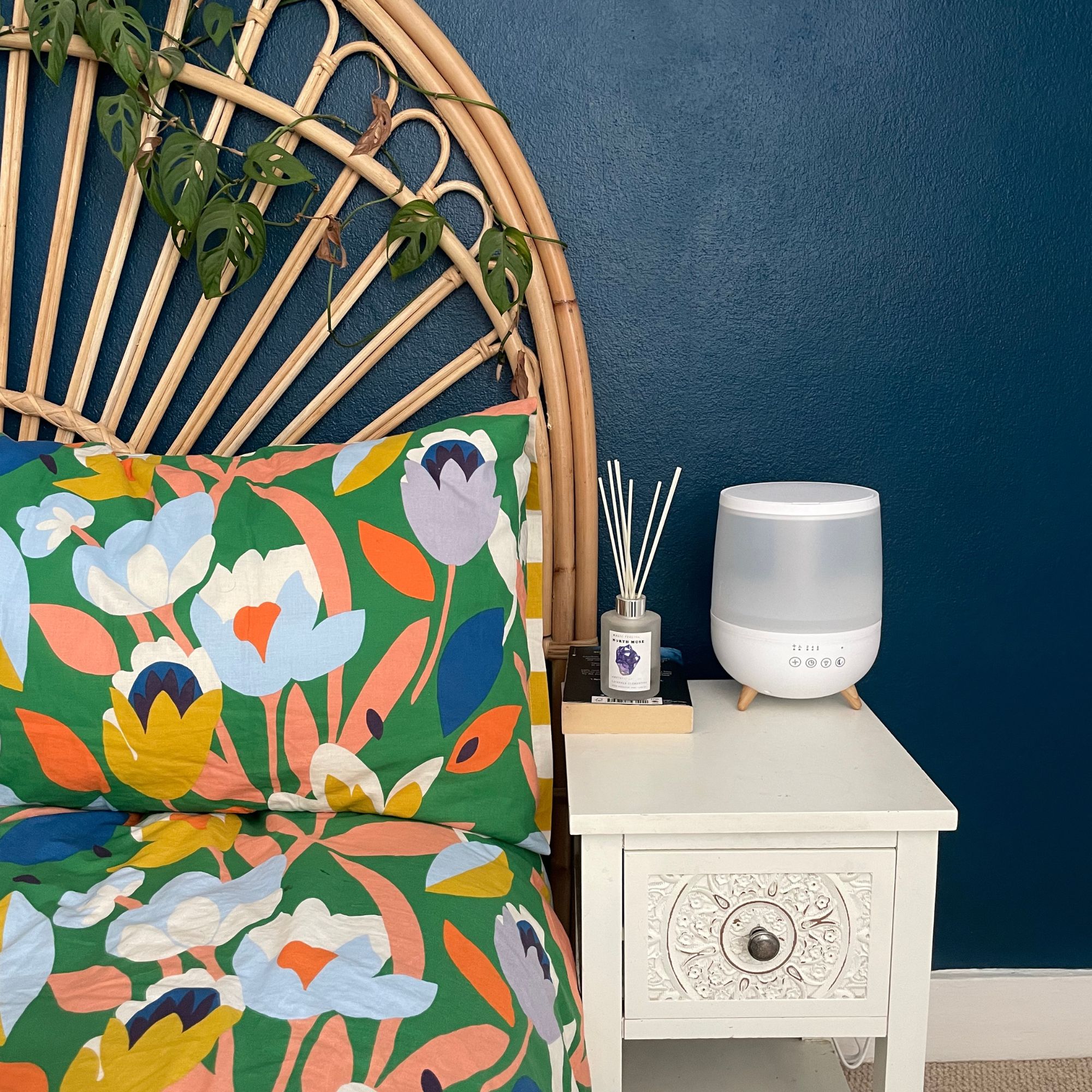 ‘My only regret is that I didn’t get it sooner’ — I tried out the £25 Dunelm buy with rave reviews to help me sleep at the height of hay fever season
‘My only regret is that I didn’t get it sooner’ — I tried out the £25 Dunelm buy with rave reviews to help me sleep at the height of hay fever seasonI always thought they were just for kids
-
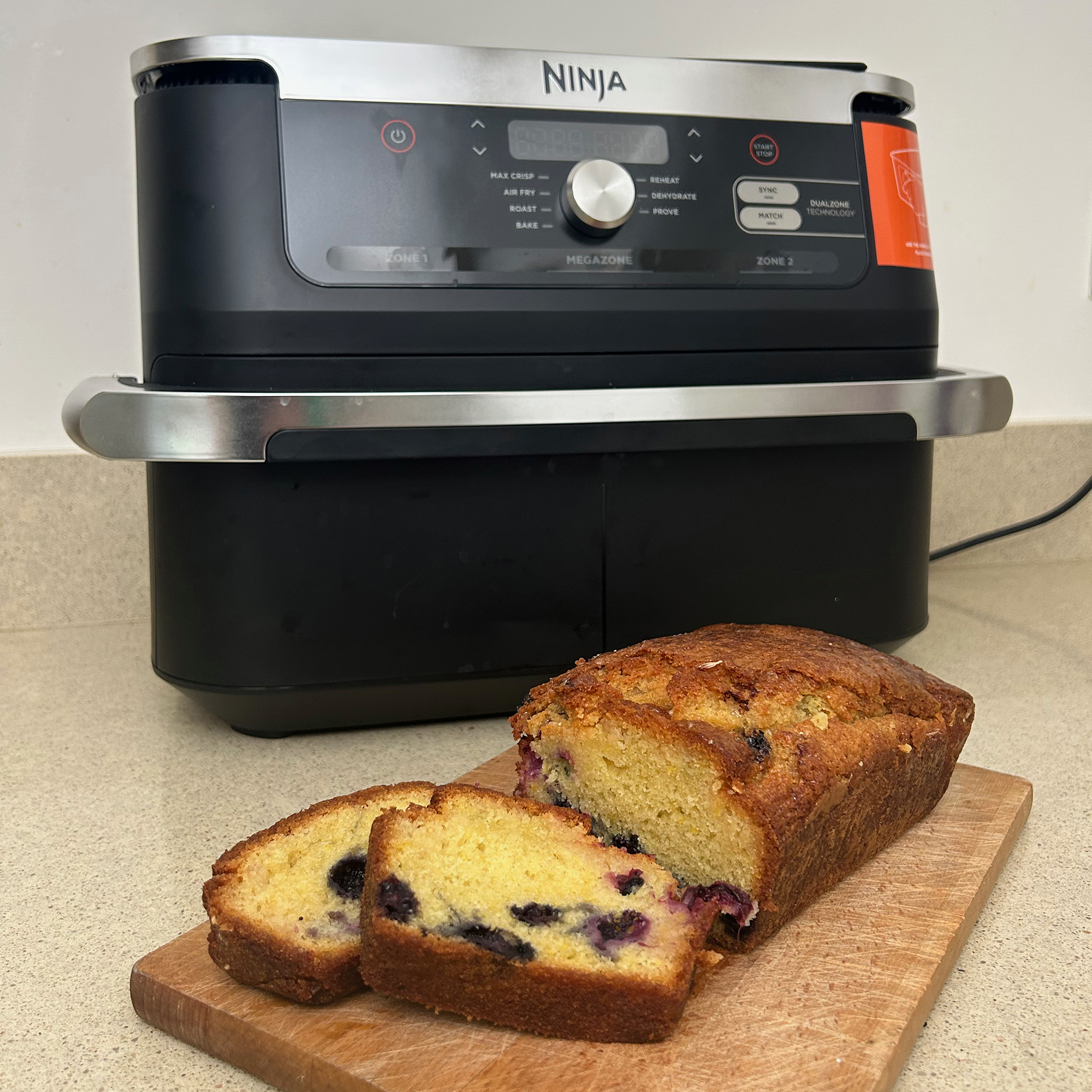 This limited-time John Lewis discount is the cheapest I've ever seen the Ninja FlexDrawer air fryer
This limited-time John Lewis discount is the cheapest I've ever seen the Ninja FlexDrawer air fryerYou can pick up our top-rated air fryer ever for just £150 today at John Lewis
-
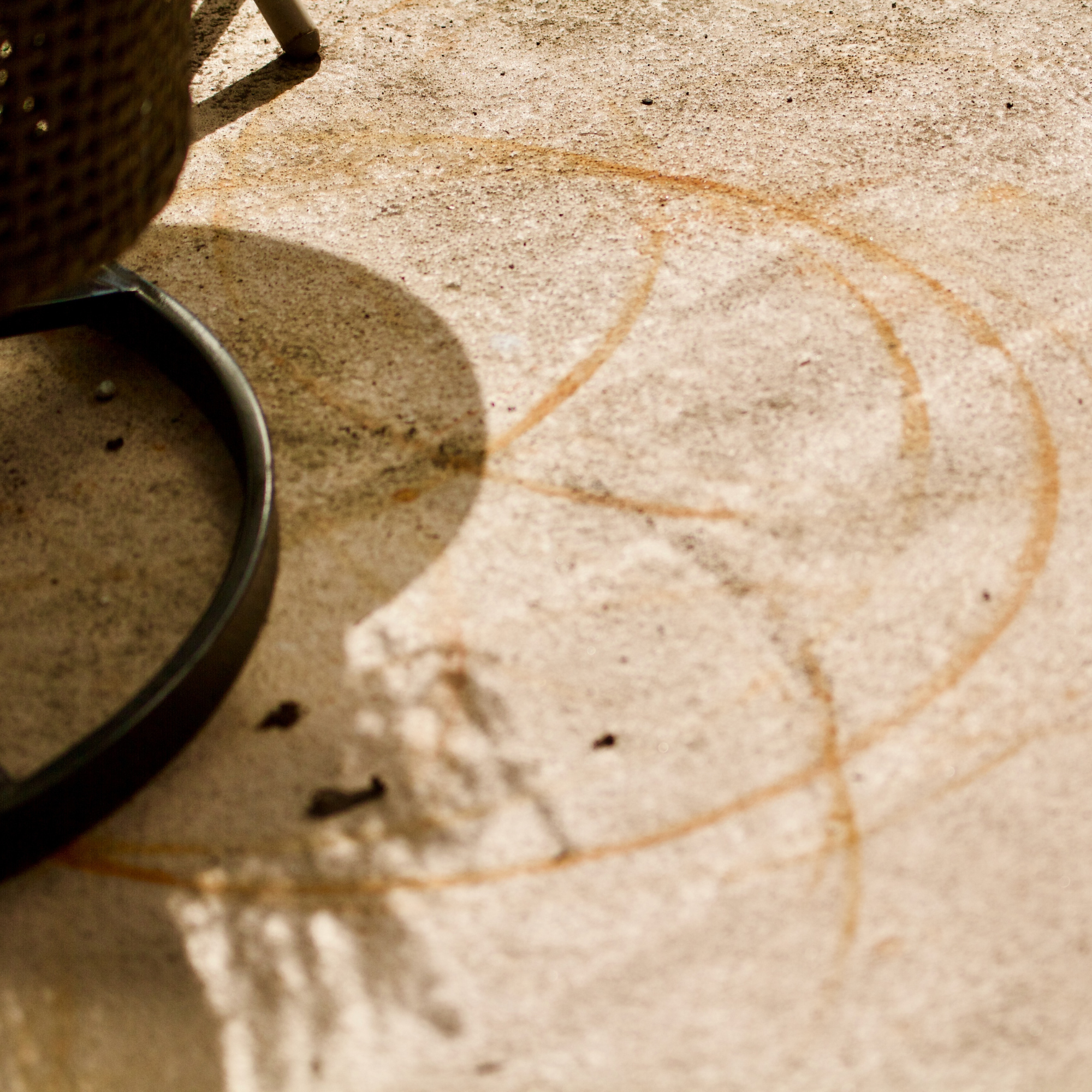 How to remove rust stains on a patio – experts reveal 5 surprisingly simple methods that work
How to remove rust stains on a patio – experts reveal 5 surprisingly simple methods that workTackle stubborn stains using everyday household staples hiding in your cupboards